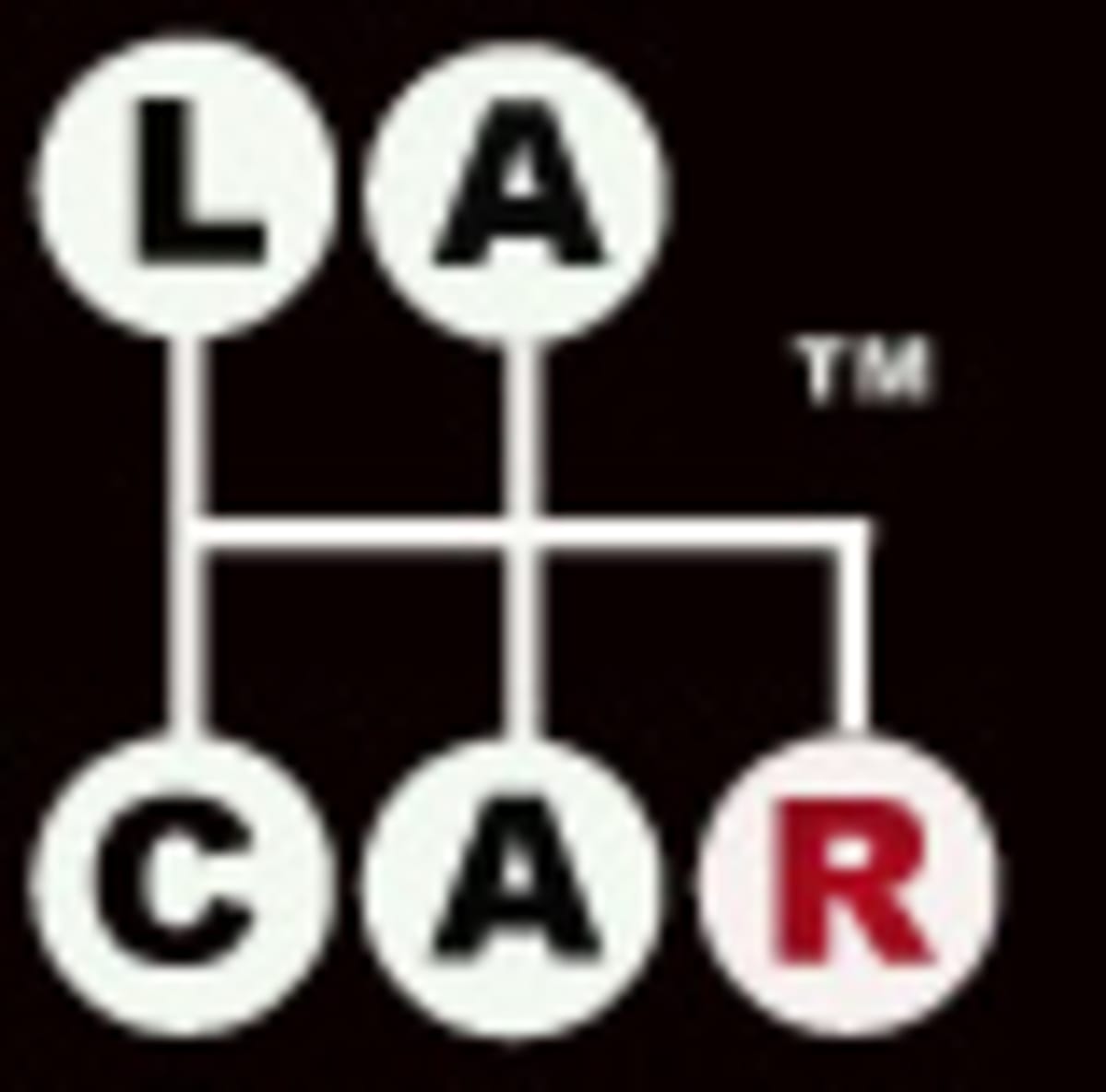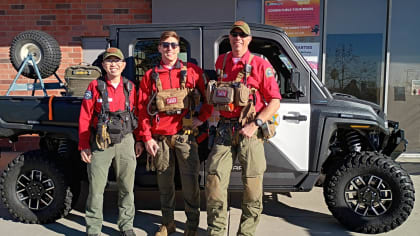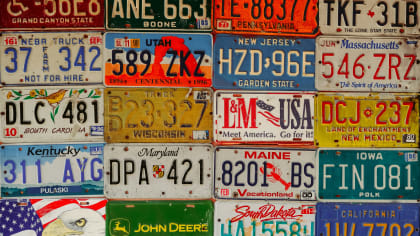MINI-TIRE COMPARO
This article is from our archives and has not been updated and integrated with our "new" site yet... Even so, it's still awesome - so keep reading!
Published on Sat, May 2, 2009
By: The LACar Editorial Staff

YOKO, THE STONES & BFG RIDE
THE
MINI
As gas prices went to the moon last year, it
looked as if the meek were set to inherit the earth - or at least the better
part of car sales. Leading the pack of fuel-efficient cars was the charismatic
Mini Cooper. Of course, those who were just looking for Vespa-like fuel
efficiency found much more to fall in love with.
The statistics are impressive. Sales climbed for the Mini, while others fell
flat. And to nobody's surprise, the peppy Brit (or German depending on how you
view it) is a leader in retained value and is one of the most popular cars on
LeaseTrader.com for the past nine months according to LeaseTrader VP of
Marketing, John Sternal. Not too bad considering just a few years before that it
had a following of fans, but it hadn't made a dent in the mainstream car buyers
habits.
Due to such a ground swell of interest in the Mini, be it new or used, it seemed
ripe to use this as a test bed of sorts. Those that are picking up one of these
miserly four-seaters second-hand will at some point be needing to either replace
the tires, or will be looking to upgrade the stock rubber.
For this comparison, the vehicle of choice is the 2005 Mini Cooper, with no mods
except for the factory upgrades. This is also equipped with a 5-speed, and the
brakes were done prior to this to keep evaluation on an even plane.
Before this testing began the car was for whatever reason cursed with a mix bag
of run flats from both Dunlop and Pirelli. While it would be unfair to rate
these as those were not new and only two of each were on the car. Nevertheless,
these didn't inspire spirited driving, nor did the run-flats provide a decent
ride quality.
For those unfamiliar with the Coop, the car is offered with run-flats or your
standard, blowout capable, tires. When equipped with run-flats the car does not
have a spare tire. So, if the decision is made to bail out of those for standard
tires, one has to keep in mind that any loss of tire pressure will require a
third parties assistance, such as the Auto Club, or a friend with a heart of
gold, and nothing better to do.
As tires are not a do-it-yourself installation part, we turned to Coast General
Tire in Costa Mesa, California. The owner Ron Hofer offered up some advice for
us. Ron gives us the most common points that drivers need to check when it comes
to their tires? "Obviously, the size, and also the speed rating, like S, T, H,
V, or Z." Ron also reiterates our mantra "Always check air pressures and wear."
Speed ratings need to be appropriate for the vehicle. You can always go up in
capability, but you don't want to hamstring a car with improper equipment. For
instance, Lance Armstrong can most likely beat anyone regardless of what bike he
rides, but I would be willing to bet he doesn't ride a Huffy that he picked up
down at Sears.
Bridgestone Potenza RE-01R
Ron suggests checking out the wet and dry traction ratings, and index ratings,
and possibly tread wear ratings. Essentially, when the time comes, know what you
are getting yourself into.
With all of that in mind, we opted to use three brands of standard (non
run-flat) summer/performance tires over the course of several months to honestly
sample what these are capable of and how they behave on the Mini. This allows a
real world sample with everything a consumer will throw at these, from
inconsistent radius onramps, rain soaked streets with trace oil and residue, to
streets torn up so bad you'd think Godzilla, or the Transformers are in town.
The one place not included is the track. Simply put, a racetrack is not an
option for most drivers, and there are other tires that would most likely be
better choices for that venue. The average driver finds his/her fun elsewhere.
The three tires that we put through their paces in back-to-back-to-back
comparisons are the Bridgestone Potenza RE-01R, Yokohama S-Drive, and the BF
Goodrich T/A G-Force KDW.
Before we begin, the appearance of the three brands is strikingly different.
Yes, they are all black and round, and all three sets are 205/45/17. The tread
patterns however, show very different engineering.
BF Goodrich G-Force T/A KDW
The Yokohama is the most similar to what we are accustomed to. The pattern is
composed of linear tread that works its way around the tire with channels cut
into that to help in dispersion of water. The Potenzas likewise have bands of
linear tread running around the tire, but the gaps between each band are much
larger and the spacing between each half looks like the set-up on a dually. BF
Goodrich is odder still with a pattern that looks like it was derived from a
motor-cross knobby tire.
Immediately the G-Force looks like it will have a ton of road noise caused by
the unusual tread design. Where the rubber meets the road the Bridgestone seems
to be lacking in enough physical material to get enough grip. Just the layman
eyeballing this would have to put the Yokohama at the top of the pack for being
road worthy. On the other hand, the other two offer a unique look that stands
out from the pack.
The first mounted on the Mini Cooper are the Bridgestone Potenza RE-01R. Make no
mistake about this, these are amazing. Right from the start it is obvious that
the ride quality is well beyond what the car was riding on previously. The
Potenzas create so little road noise it's incredible in comparison to the
well-worn run-flats.
Run-flats are able to drive without tire pressure for a reasonable distance
(about 50 miles) at a moderate speed. Those tires often perform this magic by
using a stiff sidewall that supports the tire without air. The trade off is a
stiffer ride where the noise can be an issue. The Mini Cooper doesn't offer too
much in sound deadening as it goes against the grain of the sport car, and there
is a penalty in weight and cost.
The Bridgestones also provide a very smooth ride that exceeds expectation. Lower
profile tires by their very nature are stiffer. The tire is part of the
suspension system, and care is taken by manufacturers to offer tires that
enhance the drivability of the product. Nevertheless, it would be really
difficult to pick the run-flats over these, even with the knowledge that no
back-up spare tire will be available to save the day.
Alright, so you say, but what about the handling? Well, if you like the ride
quality, you'll love the way these stick like glue. On one our favorite local
270-degree onramps it quickly becomes obvious just how good these are.
Typically, when pushing hard the traction control kicks in and the warning light
on the front-wheel drive Mini flashes, indicating the power to the wheels is
being limited until slip is eliminated. The funny thing with the RE-01Rs is that
pesky warning light for traction control never dares to rear it ugly head. This
is almost scary and gratifying all at the same time. How hard can these be
pushed before the grip gives way, and the sliding begins? Will the transition be
peaceful or frightful?
As the testing is on city streets we never explore the outer edge of performance
with the Potenzas. It can't be done at anything near street legal speeds.
Cranking up the heat doesn't change the situation. As the drive and steering are
both connected to the front end, having the tires break loose at max speed would
bad to say the least. Fortunately, we never had the chance to experience that.
The road feel through the steering is good and the tires offer a direct feel.
The Mini has a reputation as having go-kart like handling, and these tires do a
good job of furthering that.
In more technical terms the tire's structure consists of two wide steel belts
reinforced by spirally wound nylon providing strength and uniform ride quality
and high-speed capability. The sidewalls are reinforced by steel cord that helps
resist lateral deflection enhancing responsive handling and cornering stability.
Also, the soft tread compound offers a superior wear resistance polymer
enhancing grip, wear and durability. Semi-Slick shoulder blocks as well as a
wide center rib are the keys to responsiveness, and provide greater surface
contact area and bolster lateral stiffness. This curbs the irregular wear that
happens due to hard cornering and extreme driving.
Before wrapping this comparison test up, Bridgestone is taking the covers off
its new contender, the RE-11, which is replacing the RE-01R. We can't vouch for
the new tire; we expect it offers many of the same virtues that these outgoing
tires provide. On the up side, the 01R is now the deal of the decade as
Bridgestone clears out its inventory.
Yokohama S-drive
The fantastic RE-01Rs yield to our second set of tires, the S-Drive from
Yokohama. Visually, these are the most conservative of the bunch in terms of
design. But, looks aren't everything.
The make up and composition of the material determines how the tires work, as
does the tread pattern. The rubber on the Yokohama is rather different than the
Bridgestones. These use a micro-flexible tread compound created using
nanotechnology with the end result being a silica-based compound that helps to
maximize contact. Internally the composition includes twin steel belts
reinforced by jointless nylon cap plies. The belt edge strips improve high-speed
durability as well as ride uniformity. Groove-in-groove technology (small scribe
marks on the groove walls) spread out the stress loads, which in turn promotes
even wear, or so we're told.
While the RE-01Rs cling onto the road for dear life, the Yokohamas release in a
progressive, safe manner. Unfortunately, these start giving way too soon. On the
plus side these are like an early warning sign to chill out. It is easy to
pretend you are a drift star with these. Of course, drifting is best left to a
rear wheel drive car, which this is not. Sliding tires are not good when they
are the ones that control your steering.
Also surprising is how these generate more noise than the Bridgestone. This is
particularly noticeable at freeway speeds, especially on concrete surfaces.
Whether it's attributable to the tire compound, or the sidewall stiffness, or
maybe even the tread doesn't really matter, the result is undesirable. The high
tone hum is not out of control, but in the Mini it adds to an already loud
cabin.
This left the most radical of the pack for last. BF Goodrich has created a tread
pattern that left us wondering. After exercising this set of rubber, the results
were not what we thought they would be. The tread design does not add to an
elevated noise level. In fact, the noise is only a smidge more than the RE-01s
and definitely less than the S-Drives. Looks can be deceiving.
These do have grip. The total surface area in contact with the pavement is
generous compared with the Potenzas, and the adhesion is good, but still these
are not in the same league. Unlike the Potenzas and the Yokohama products these
don't have a linear tread pattern. What this means is that the G-force doesn't
provide the same straight-line stability when driving along the freeway.
Wandering isn't heavily pronounced, however it does require a little more
awareness. Thankfully, this is not at all a problem at street speeds.
The unusually large tread is able to offer greater benefits under high torque
loads, which really isn't a huge issue on the base Mini. On the other hand, the
tire's progressive and predictable nature is similar to the Yokohama as they
begin reaching their limits of adhesion.
In dissecting these tire one finds twin steel belts that are reinforced by BF
Goodrich's ETEC (Equal Tension Containment) System. These spirally wound nylon
strips offer greater strength, and an even footprint pressure, all the while
providing uniform ride quality and reduced weight. BF Goodrich also employs an
element it likes to call g-Control, which is a sidewall insert used to generate
cornering force by resisting deflection.
In a roundabout way these tires can save people big bucks and embarrassment.
Mini Cooper owners, as well as all other car owners, will appreciate the rim
protector ribs that keeps alloy wheels from gnarly curb damage. Sure, the raised
lip on the tire isn't fool proof, but it's at least a little insurance.
All of the tires have a rounded shoulder, so we didn't feel any tracking with
surface grooves or road unevenness. This also helps in providing better feedback
and communication to the driver as to what the tires are actually doing. This
trio did in fact do just that, and this only makes the Mini Cooper even
sportier.
Like magic, we actually managed to get rain over the course of the comparison.
Even while these are considered summer tires, all of these provide adequate
drivability in the wet. The behavior is more evident in foul weather with the
S-Drives slipping a little earlier, and the Potenzas causing even greater
concern as to the unpredictable snapping point. Regaining traction in the rain
is not where we want to go, nor would we recommend that on city streets.
In an effort to resist hydroplaning and enhance wet traction the Potenzas have
two wide, straight circumferential grooves with Hydro Evacuation Surface (H.E.S.)
walls and multiple directionally aligned lateral grooves to increase water
evacuation. Bridgestone's Racing Slit Technology came from F1 testing and
refinement.
Yokohama's approach is to use wide circumferential grooves and angled groove
walls that enhance cornering traction and evacuate water. Or in plain speak it
resists hydroplaning.
BF Goodrich's T/A is using a silica-reinforced tread compound. The wide
circumferential and lateral grooves are the basis of a directional tread
pattern. This then increases the elimination of water under tire, and thereby
enhances wet traction.
Dishing out an honest, albeit slightly biased insight, as to where to shop, Ron
suggests finding a dealer that has "More product knowledge, and hands on
experience with tread-life and handling characteristics". I don't think anyone
can go wrong with advice like that.
All three brands are contenders, but everyone will find a different tire is the
right choice for their needs and driving habits. But, this is where so many
enthusiasts have differing opinions as to what works best.
When asked the question, will one set of tires perform as well on one model of
car as well as it performs on another, or is one brand or type of tire more
suited to a particular car over another, the answers vary. Ron Hofer from Coast
General Tire is of the opinion that "Yes, I think that one set of tires that
works well on one car will work as well on any other model". Others, like
myself, feel that certain dynamics of one tire might prove to either enhance or
detract from a particular car's behavior in comparison to another type of tire.
Either way, tests like this offer a good baseline.
We are finding online the BFGoodrich g-Force T/A KDW 2 for $127 each. Yokohama
S.drive are available for just $102 per tire. The new Bridgestone RE-11 that
replaces the RE-01R are $166 per donut. These prices are without mounting, labor
or materials.
We don't expect this comparison to end the ongoing bickering and squabbling over
what tires are the hottest ticket going. This only fans the flames, so let the
burning rubber begin.
Find more at:
www.bfgoodrich.com
www.bridgestonetire.com
www.yokohamatire.com
www.coastgeneral.com













